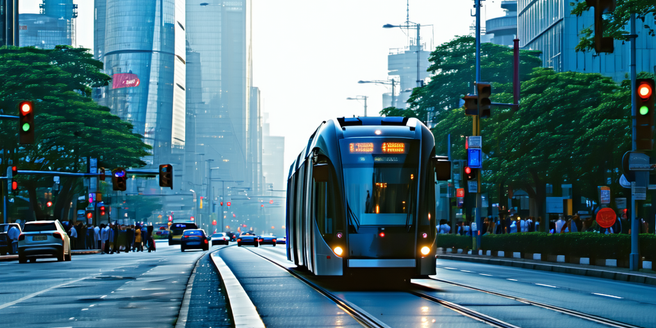Ai For Improved Public Transport

Understanding AI in Public Transportation
Artificial intelligence is revolutionizing public transportation by offering smarter solutions and enhanced efficiency. By processing vast amounts of data, AI systems can optimize routes, reduce wait times, and improve overall service reliability. These systems learn and adapt to changing conditions, leading to more responsive operations. Understanding how AI integrates with current transit infrastructure is crucial for developing more effective transport networks. Leveraging machine learning algorithms, transit authorities can anticipate peak travel times, adjust schedules accordingly, and even detect patterns in commuter behavior. This proactive approach helps alleviate congestion and enhances the user experience, making public transport more attractive and accessible.
Benefits of AI for Passengers and Operators
AI provides significant advantages to both passengers and operators in the public transport sector. For passengers, AI leads to enhanced convenience through real-time updates, predictive arrival times, and personalized travel recommendations. This results in less waiting and more efficient planning. For operators, AI allows for optimized resource allocation, ensuring that vehicles and staff are deployed where and when they are needed most. Additionally, data analytics helps in identifying bottlenecks and improving fleet management. As a result, operators can enhance service quality and reduce operational costs. By bridging the gap between supply and demand, AI contributes to a more seamless and user-friendly transit experience.
AI-Driven Traffic Management Solutions
AI-driven traffic management solutions are transforming how cities manage congestion and optimize traffic flow. By utilizing real-time data from various sensors and GPS devices, AI algorithms can predict traffic patterns and make adjustments instantaneously. These systems can dynamically change traffic signal timings to alleviate congestion, prioritize public transport vehicles, and improve overall traffic efficiency. With AI, cities can also implement advanced incident detection and management strategies, reducing response times to accidents or other disruptions. By promoting smoother traffic flow and reducing bottlenecks, AI contributes to less pollution, decreased travel time, and improved urban mobility.
Enhancing Safety and Security with AI
AI’s role in enhancing safety and security in public transport cannot be overstated. It provides advanced surveillance solutions through automated camera systems that detect unusual behavior or safety threats in real-time. AI can also monitor vehicle maintenance needs proactively, identifying potential safety hazards before they become critical issues. Furthermore, AI-driven data analytics help optimize route planning and reduce congestion. Additionally, AI-enhanced communication tools allow for rapid dissemination of emergency information to passengers and operators. By integrating AI, public transport systems become not only safer but also build trust with passengers, encouraging more frequent and widespread use of public transit options.
AI Applications in Predictive Maintenance
Predictive maintenance powered by AI transforms the maintenance strategy of public transport systems. By harnessing data from sensors and historical performance metrics, AI can predict when components are likely to fail, allowing for interventions before issues arise. As a result, maintenance teams can prioritize resources effectively and address potential failures proactively. This reduces both downtime and maintenance costs, while ensuring vehicles remain in optimal working condition. AI systems continuously learn and adapt to identify patterns of wear and tear, leading to more accurate predictions over time. Implementing predictive maintenance across fleets ensures a more reliable service for passengers and extends the operational lifespan of transport vehicles.
Future Trends: AI in Public Transport
The future of AI in public transport promises exciting developments. Emerging trends include the use of AI for autonomous vehicles, which could revolutionize last-mile connectivity and on-demand service models. AI will increasingly facilitate personalized travel experiences through more sophisticated data analysis, offering tailored route and service options to individuals. Furthermore, AI is set to play a pivotal role in integrating various modes of transport within smart city frameworks, enhancing both infrastructure efficiency and urban living standards. As AI technology continues to evolve, its impact on public transport will lead to more sustainable, efficient, and user-centric transit solutions.